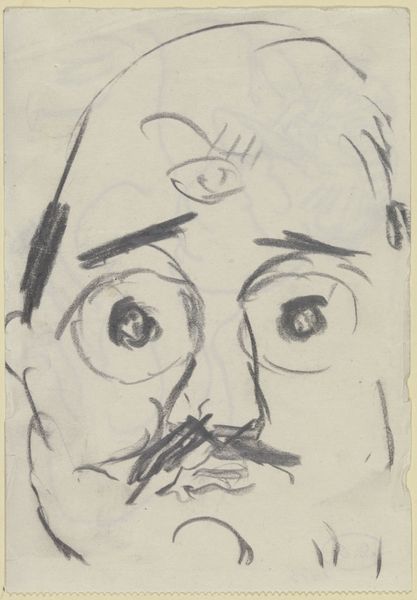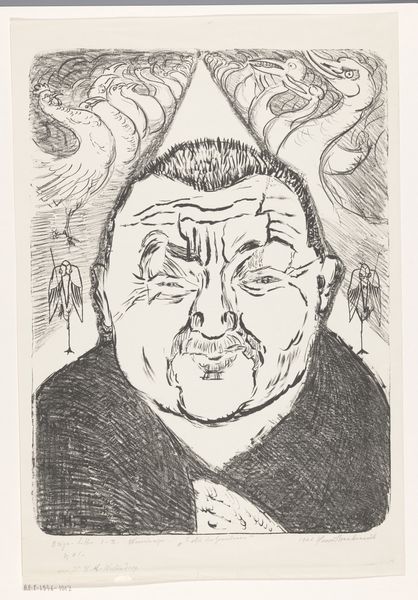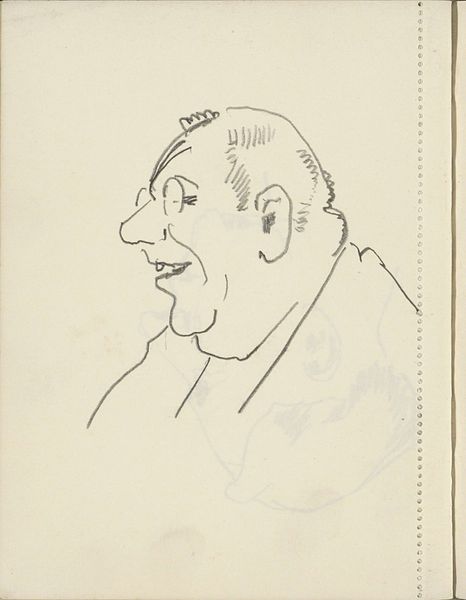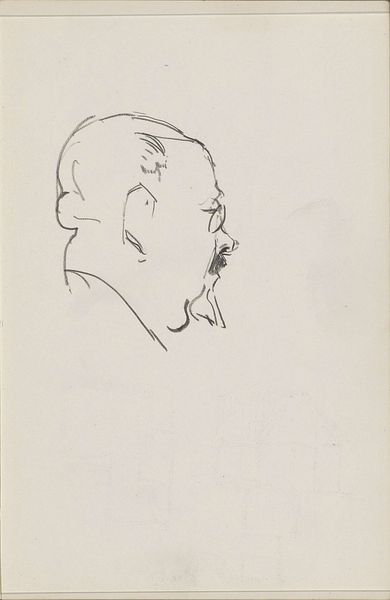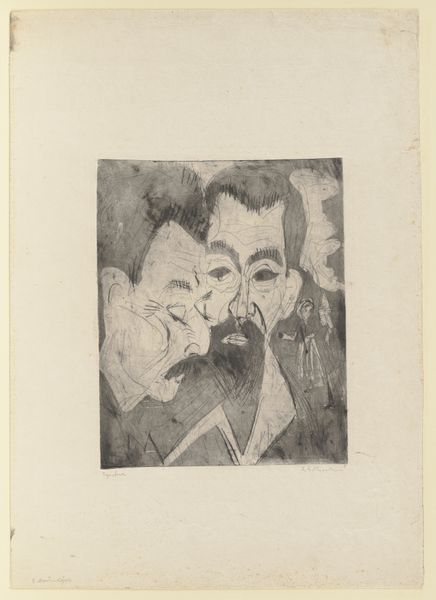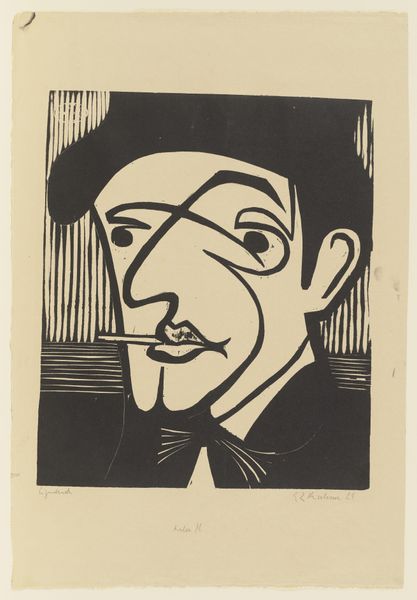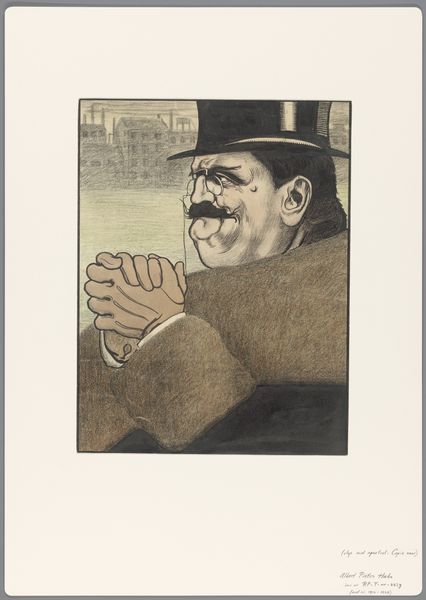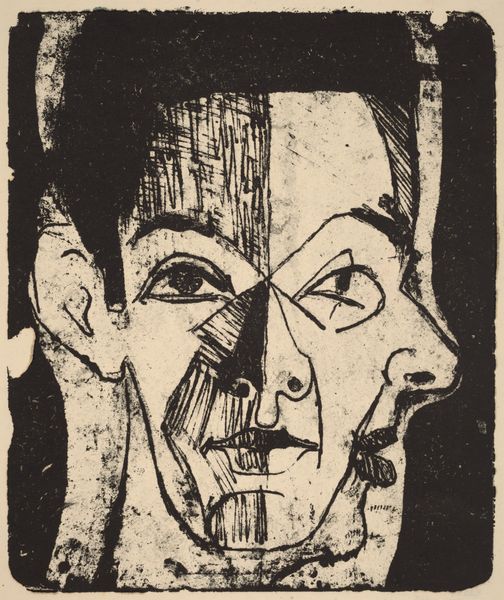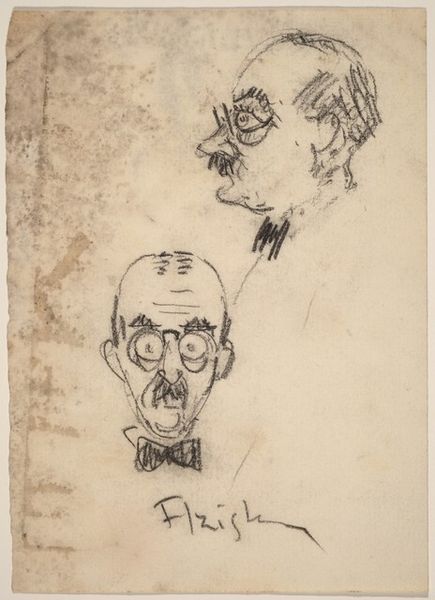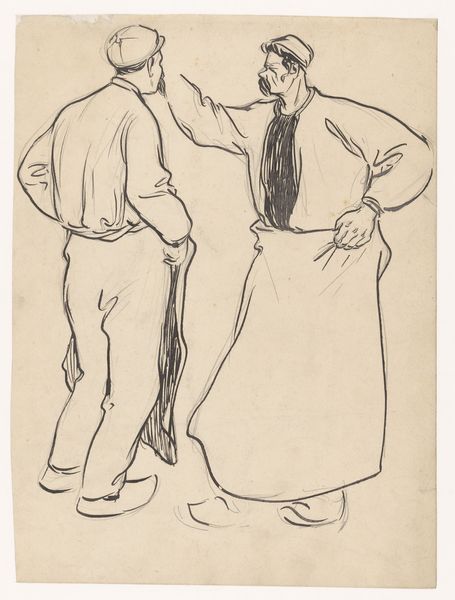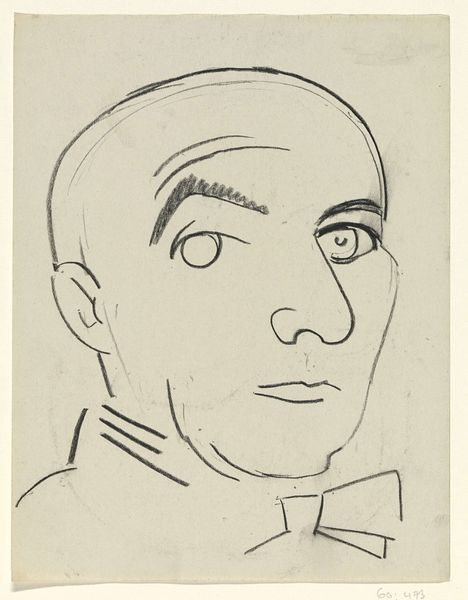
drawing, print, etching, graphite, pen
#
portrait
#
drawing
#
comic strip sketch
#
cartoon like
#
cartoon based
# print
#
etching
#
caricature
#
caricature
#
cartoon sketch
#
personal sketchbook
#
graphite
#
sketchbook drawing
#
pen
#
cartoon style
#
cartoon carciture
#
sketchbook art
Dimensions: height 134 mm, width 184 mm
Copyright: Rijks Museum: Open Domain
Curator: Here we have a print called "Twee karikaturale mannenhoofden" or "Two Caricatured Male Heads" by Henri-Charles Guérard, created sometime between 1856 and 1897. It employs etching, pen, graphite, and other printmaking techniques. My first impression? Editor: They're almost grotesque. The faces seem inflated, with an exaggeration that feels both humorous and subtly unsettling. I notice the man on the right in particular, his features suggest an inner grumpiness, don't you think? Curator: It’s definitely pointed, even bordering on satire. Caricature served a critical social function. Beyond mere entertainment, it allowed for the veiled critique of figures of authority and commentary on societal norms. Editor: Absolutely. Think about the visual language: bulging eyes representing astonishment or naivete; an oversized nose indicating excessive worldliness or even vulgarity. The sparse hair style in the left caricature may convey that this individual has lost his mind to earthly pursuits. Curator: And Guérard’s likely working within a specific visual tradition. These weren’t random exaggerations. The 19th century witnessed the rise of illustrated newspapers and journals where caricatures became a powerful tool for shaping public opinion, a subtle tool of critiquing individuals or ideals that didn’t conform with certain cultural values. Editor: The lack of a background also contributes. These heads are floating in this neutral zone which really emphasizes the features of each face without being attached to a context that makes the satire even more directly about individuals. Curator: Which can make them both more universal and less overtly subversive. Focusing on facial features is a really ingenious trick here, emphasizing character flaws or stereotypes through symbolic visual cues that a contemporary audience would immediately recognize. Editor: It does spark curiosity about their identity and social status, although obscured for today’s audiences. Thank you; now I wonder what statements Guérard tried to achieve through caricature! Curator: Precisely! It’s a powerful reminder that images are never neutral; they always carry a viewpoint, reflecting a world, and molding opinions.
Comments
No comments
Be the first to comment and join the conversation on the ultimate creative platform.
